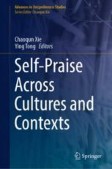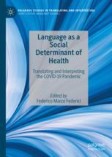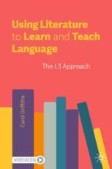Search
Search Results
-
The local Dialect of Novi Jarylovyči (Region of Černihiv) in the East Slavic Context
The article provides a linguistic description of the most common dialectal features which typify the dialect of Novi Jaryloviči (former district of...

-
German measurement structures: case-marking and non-conservativity
This paper addresses the syntactic and semantic analysis of nominal measurement structures like two liters of black coffee in German. German allows...

-
Self-Promoting: A Double-Edged Sword
This chapter aims to enrich our understanding of the speech actSpeech act self-praise performed in managerial responsesManagerial responses to hotel...
-
Between You and I: A Methodological, Mixed-method Corpus-pragmatic Approach to Hypercorrect Uses of Subject Pronouns in Object Position
The present paper takes a corpus-pragmatic approach to an issue traditionally situated at the interface of sociolinguistics, grammatical...
-
Self-Praise in the Mexican Context: A Sociocultural Approach
In this chapter we explore different understandings of self-praise within the Mexican Spanish-speaking context. After an examination of Mexican...
-
Self-Praise in Peninsular Spanish Face-to-Face Interaction
Considered a form of self-presentationSelf-presentation, self-praise can be defined as a speech actSpeech act involving an implicit or explicit...
-
Risk and Safety on Cruise Ships: Communicative Strategies for COVID-19
The cross-cultural study presented in this chapter explores the websites of five different cruise lines (MSC, Costa Crociere, Royal Caribbean,...
-
Counting, measuring, and the fractional cardinalities puzzle
According to what I call the Traditional View, there is a fundamental semantic distinction between counting and measuring, which is reflected in two...
-
Clausal comparison without degree abstraction in Mandarin Chinese
This paper argues (a) that the bı̌ comparative construction in Mandarin Chinese is a form of clausal comparative and (b) that Mandarin Chinese lacks...

-
The syntax and semantics of Swedish copular sentences: a comparative perspective
This paper investigates the (recent) case alternation in Swedish equative and predicational copular sentences (‘Cicero is Tully’, ‘Cicero is a nice...

-
A pragmatic explanation of the mei-dou co-occurrence in Mandarin
Mandarin universal terms such as mei -NPs in preverbal positions usually require the presence of dou ‘all/even’. This motivates the widely accepted...

-
Cumulative Comparison: Experimental Evidence for Degree Cumulation
In this paper we address the question whether it makes sense to assume that the domain of degrees, as used in degree semantics, consists not just of...
-
Teaching Translation into Spanish Asynchronously: Assessment and Engagement in the Times of COVID
Translation has always played a pivotal role in language learning, but its use as a pedagogical tool has been the object of controversy, particularly...
-
Using Literature in the Language Classroom
Whereas Chapter 3 aimed to extend the literary repertoire, this section focuses on using literature in the language classroom. Here we deal first...
-
Contact-Induced Change in the Languages of Southern China
The aim of this chapter is to trace the development of contact-induced language change as a subfield of linguistic research in China. We first...
-
A lot of hatred and a ton of desire: intensity in the mereology of mental states
Certain measurement-related constructions impose a requirement that the measure function used track the part-whole structure of the domain of...
-
Focus on Language in CBI: How Teacher Trainees Work with Language Objectives and Language-Focused Activities in Content-Based Lessons
This paper investigates to what extent teacher trainees who had received instruction in pedagogical linguistics incorporate language learning in...
-
Cohesive devices as an indicator of L2 students' writing fluency
Investigating links between temporal features of the writing process (e.g., bursts and pauses during writing) and the linguistic features found in...
-
Contrast and verb phrase ellipsis: The case of tautologous conditionals
This paper argues that verb phrase ellipsis requires contrast. The central observation is that ellipsis is ungrammatical in tautologous conditionals;...

-
Reference to ad hoc kinds
Although there is no consensus about what kinds are, there is a common understanding that kinds can be regarded as collections of objects that share...
